Your contact persons
Want to find out more? - Contact us for customised solutions!
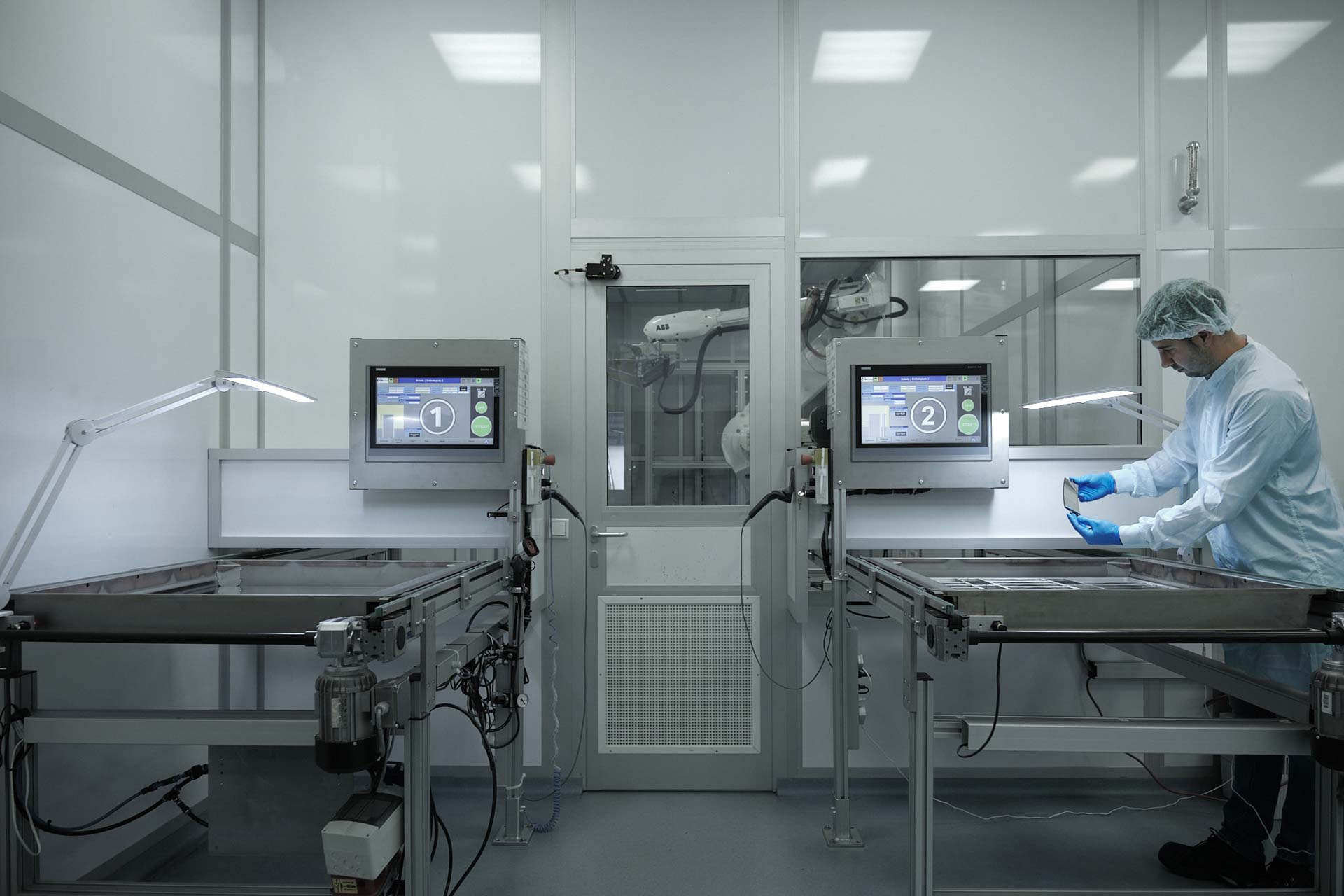
Our commitment extends beyond innovative coating solutions to encompass a comprehensive range of coating-related services. Serving as your development partner, we support your projects from start to finish, including upstream and downstream activities such as cleaning, testing and inspection, or packaging and logistics. Our primary focus is on delivering high-quality and efficient coating solutions.
Our seasoned, specialised employees contribute their expertise and experience to the development of new products and manufacturing processes at every stage. At Bte, we cover the entire process chain. In addition to coating, we provide mechanical processing capabilities and maintain a vast network of specialised partners.
The first step in every project is the development of the coating design (link consulting and coating design), tailored to your specific component and its requirements, and the determination of the appropriate coating technology.
In addition to our coating services, we also provide assistance in selecting the appropriate substrate for your application. We offer a diverse range of substrates to meet your specific needs. With a substantial stock of glass and longstanding collaborations with suppliers of other base materials, we ensure access to high-quality substrates for your projects.
Examples of possible substrates
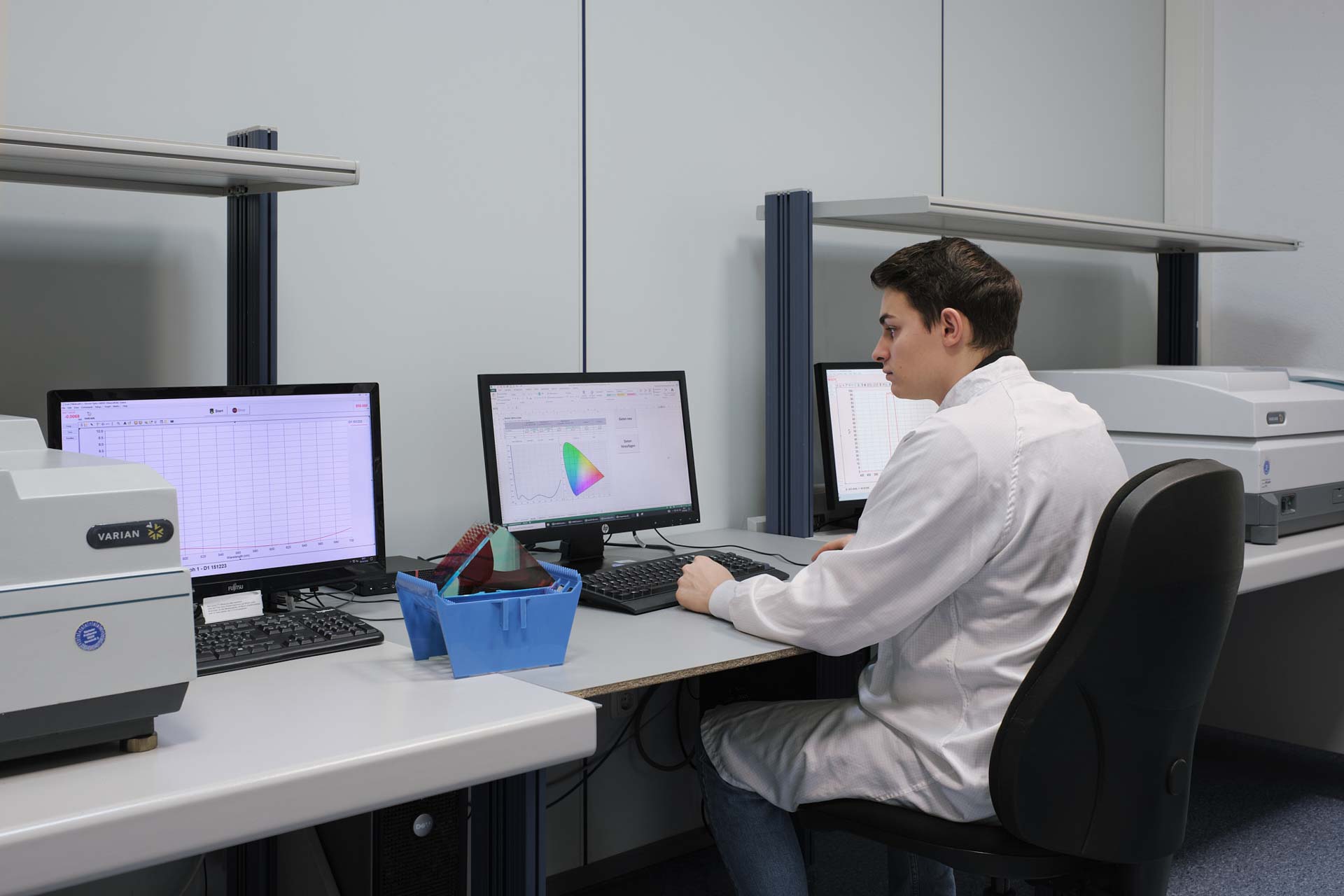

Proper pre-treatment and thorough cleaning of substrates are vital for ensuring high coating quality. Most substrates undergo preparation for coating in our ultrasonic cleaning systems. We have three ultrasonic systems of varying sizes dedicated to pre-treatment and cleaning processes. For particularly delicate glass types or components with intricate geometries, meticulous hand cleaning is employed. Following the cleaning process, substrates undergo visual inspection within a laminar flow box before being securely placed in special holders designed for the coating systems. Thus, we ensure the integrity and quality of the coating process.


While the specifics of the coating process may vary depending on the system technology, certain steps remain consistent. The holders containing the prepared substrates are first placed into the coating system, followed by the creation of a vacuum within the system. Once the required pressure and temperature conditions are achieved, the actual coating process commences, with layers being deposited one after the other.
The duration of the coating process varies based on factors such as the type of coating and the number of layers required, ranging from a few minutes to several hours. Following the completion of the process, the systems are cooled down and reopened (flooded) in preparation for the next batch.
Periodic cleaning of both the internal linings and the evaporation sources of the systems is conducted, ensuring a high level of cleanliness and consequently, good quality. Additionally, a test glass, often referred to as a "witness piece", is coated with each batch to verify the optical properties. This meticulous approach guarantees the reliability and consistency of the coating process.
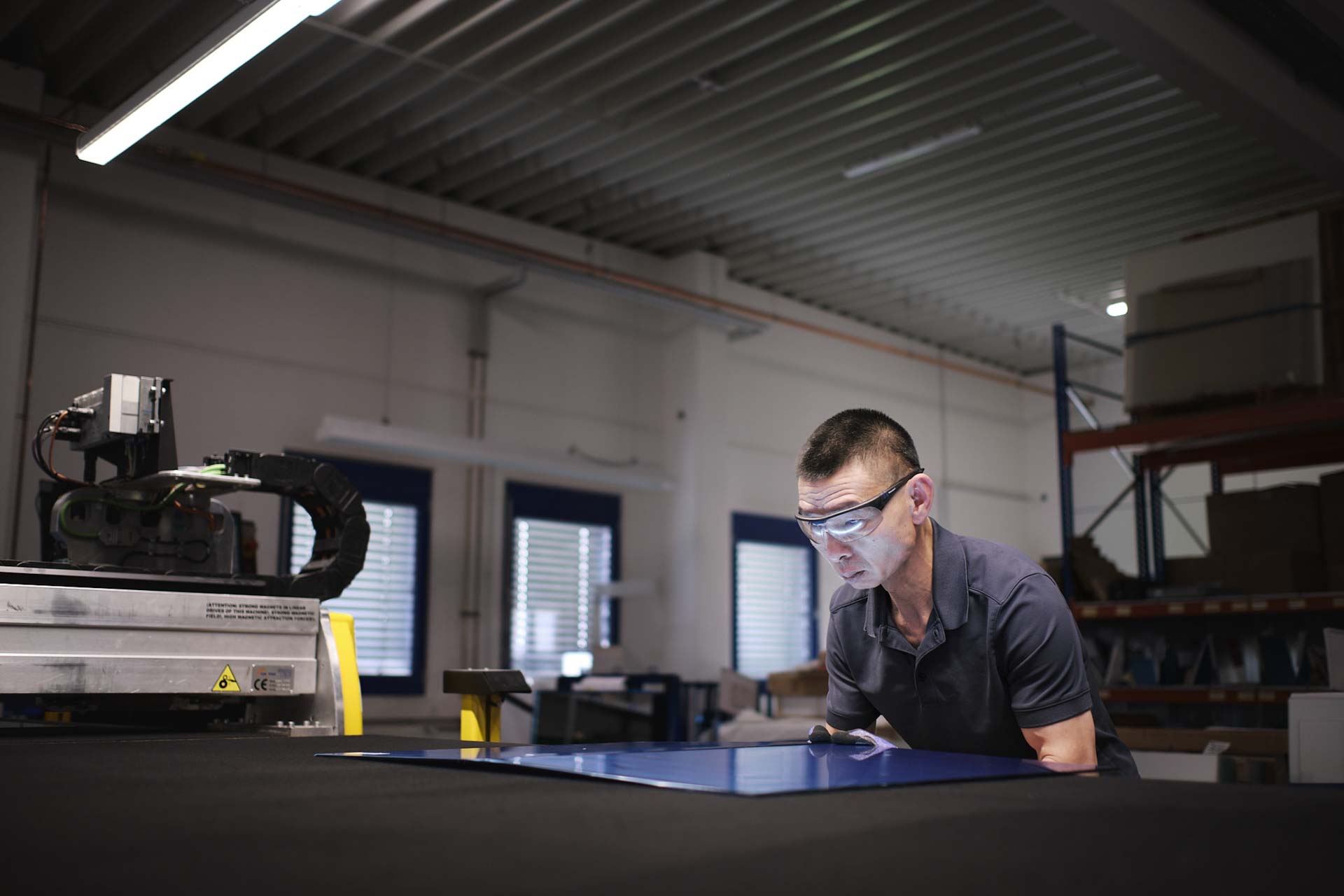

Glass substrates undergo precise sizing using either the scribe & break method or a laser cutting system employing laser perforation, followed by manual or laser-controlled separation. Laser-cut substrates produce a blunt, matte break edge, enhancing safety during further processing compared to the sharp edges produced by the scribe & break method. Laser cutting allows for highly flexible contour designs, and the precision of the process ensures accuracy in the individual parts.
Bevelling is utilised to shape the edges of glass substrates, rounding off edges or creating standard edges with a 45° angle, among other shapes (e.g., C-shape). Bevelling can be carried out either before or after coating, serving to safeguard the substrate from chipping and facilitating safe manual handling.
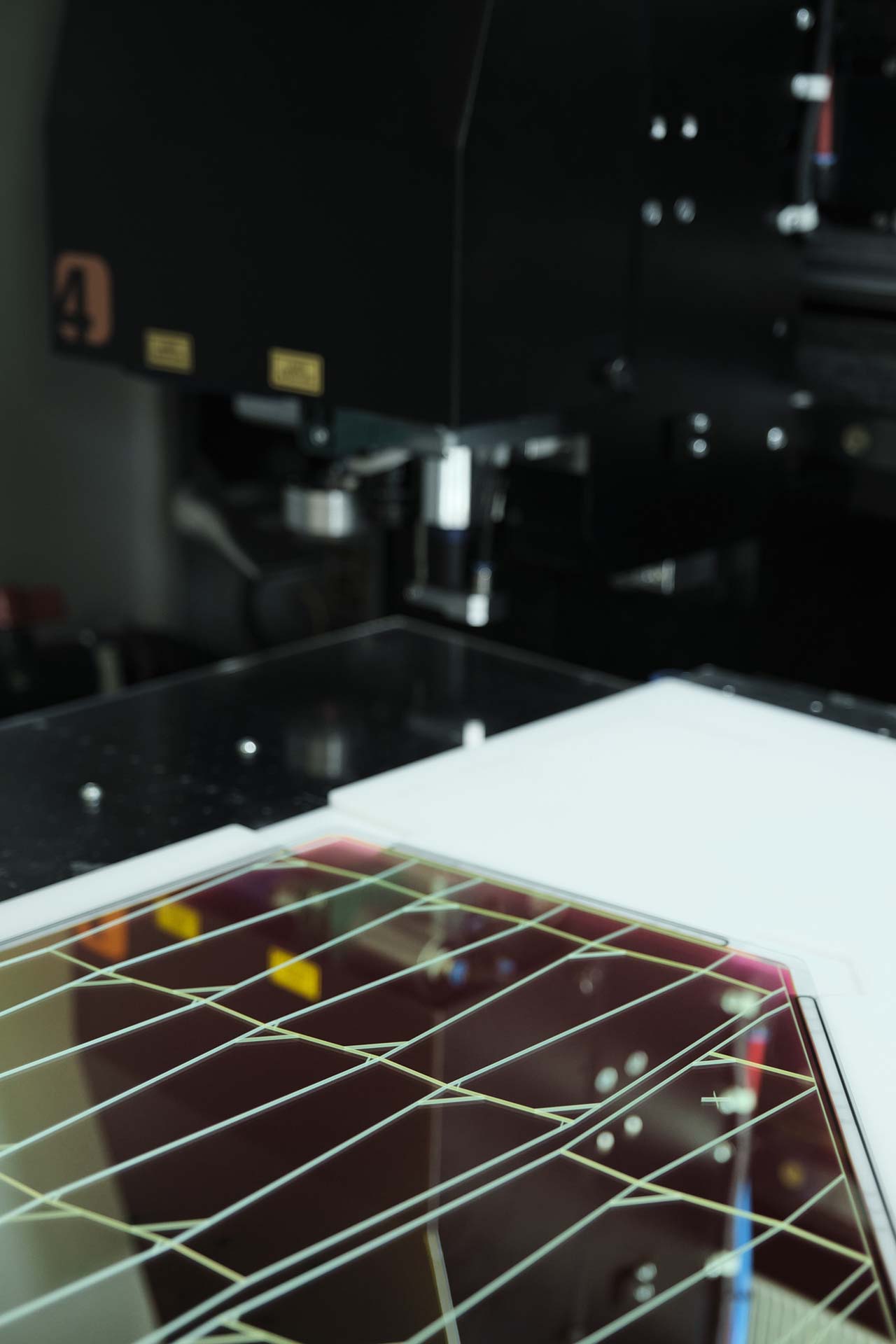
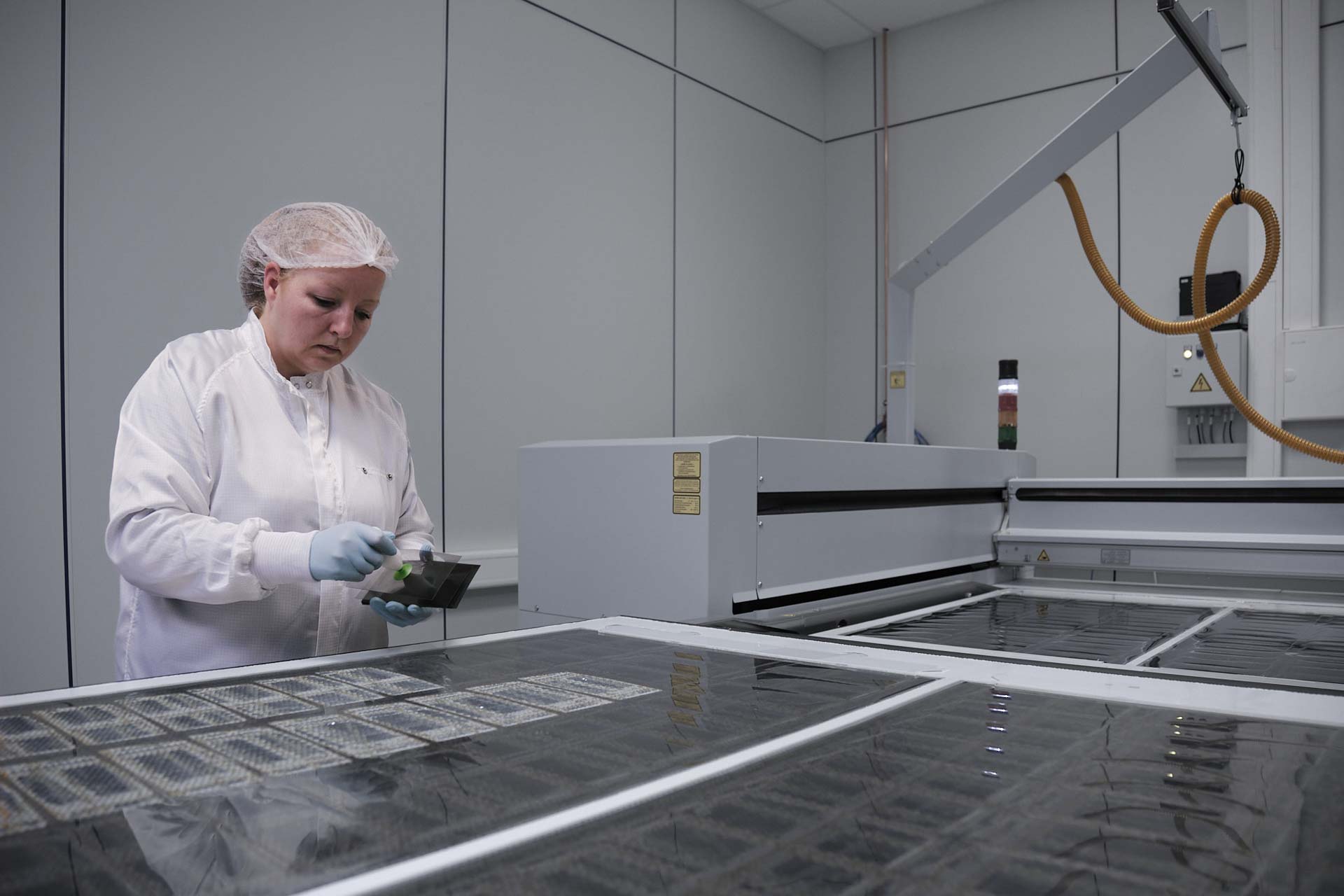

Furthermore, we operate our own CO2 laser cutting system for processing plastic sheets and films. This capability enables us to cut materials such as polariser films or films for cold-light mirrors, commonly utilised in applications like head-up displays (link to automotive sector). In-house cutting enhances our flexibility and enables precise customisation of customer products (free form shaping).
For precise lamination, a fully automated machine with two robots applies the cut films to the substrates automatically, ensuring the highest level of repeatability. Additionally, automatic labelling is feasible within this cut-to-size process, further streamlining production.
Overview:
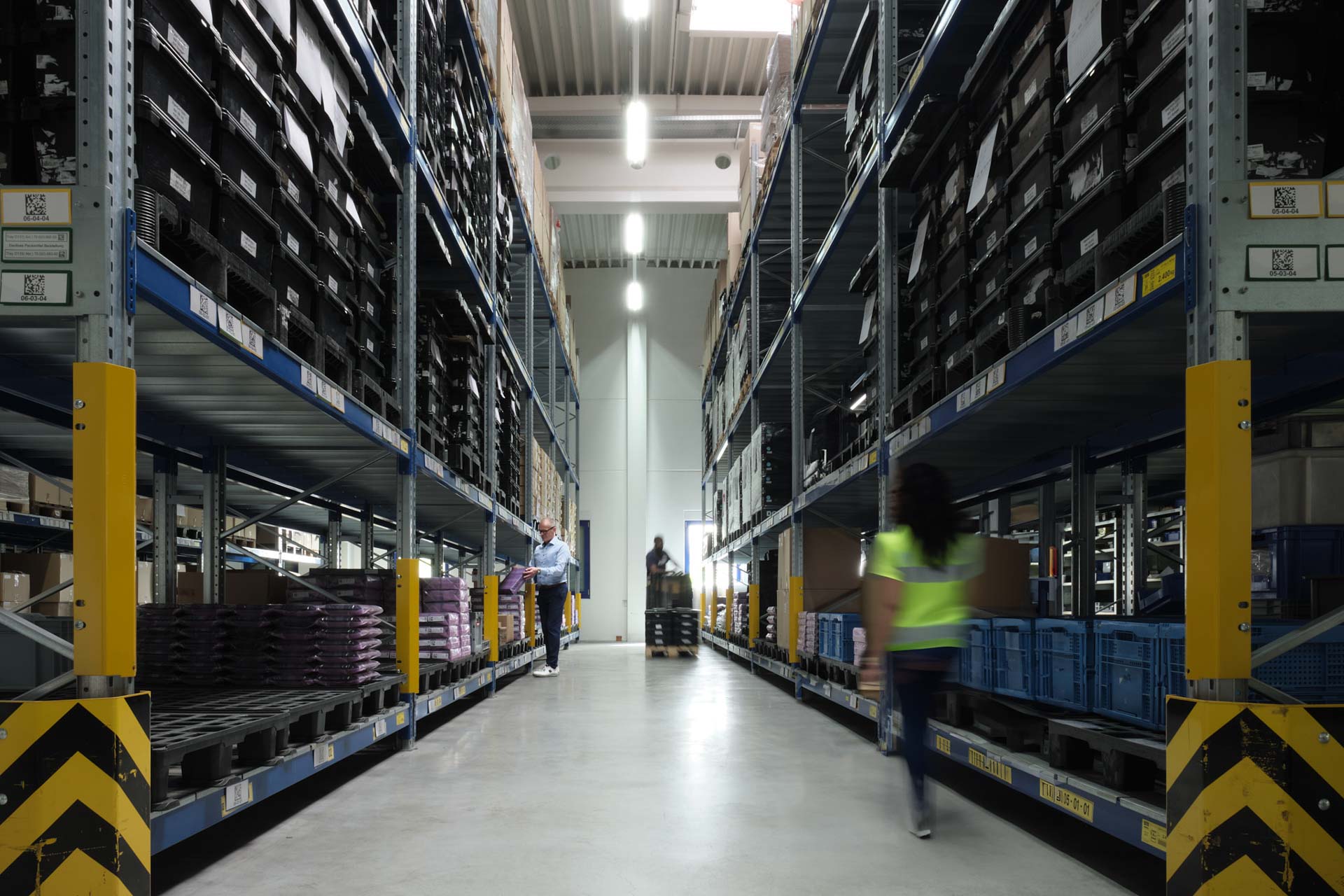
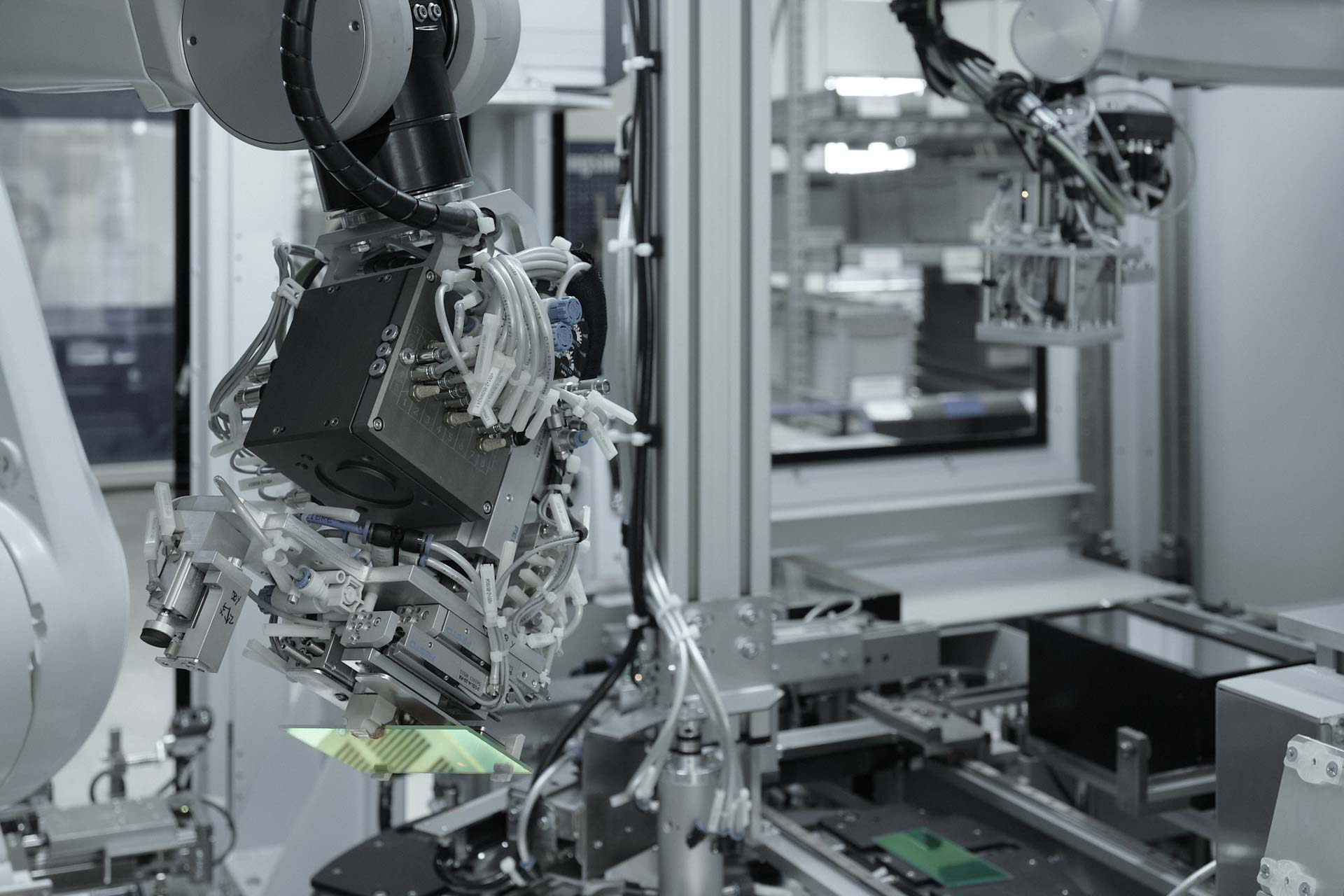


Want to find out more? - Contact us for customised solutions!